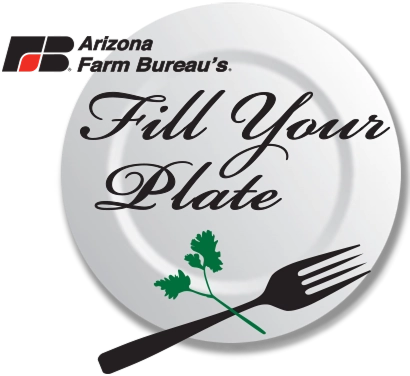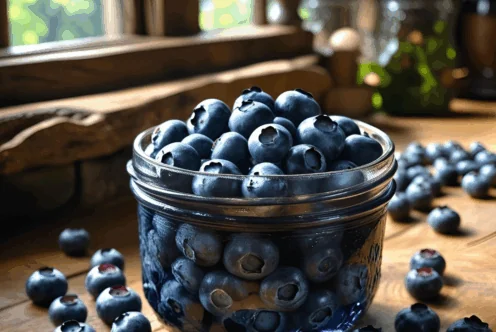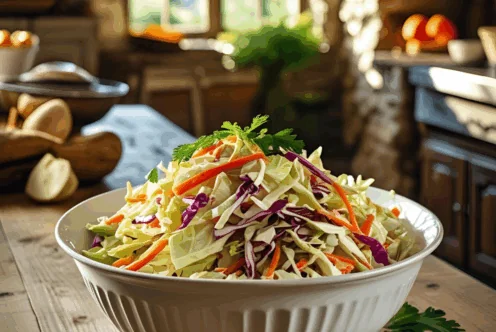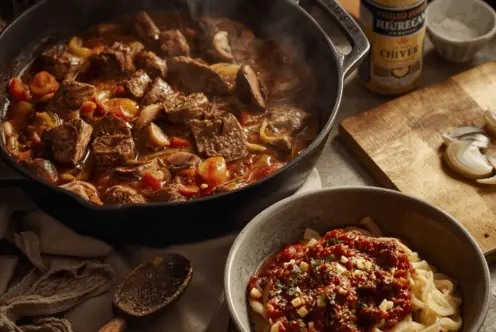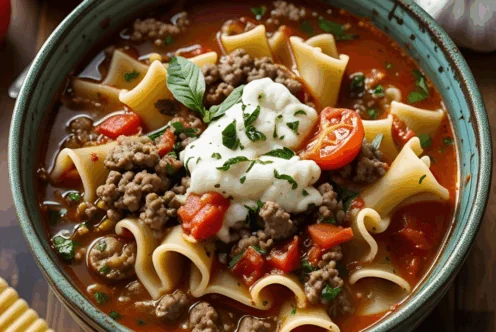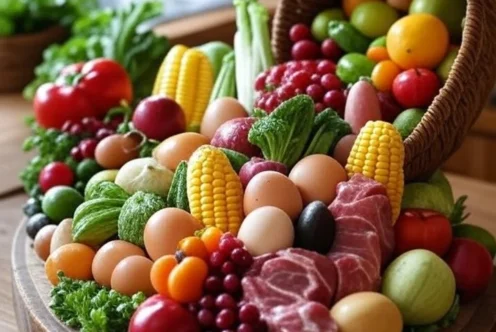Blog
Have Protein at Every Meal
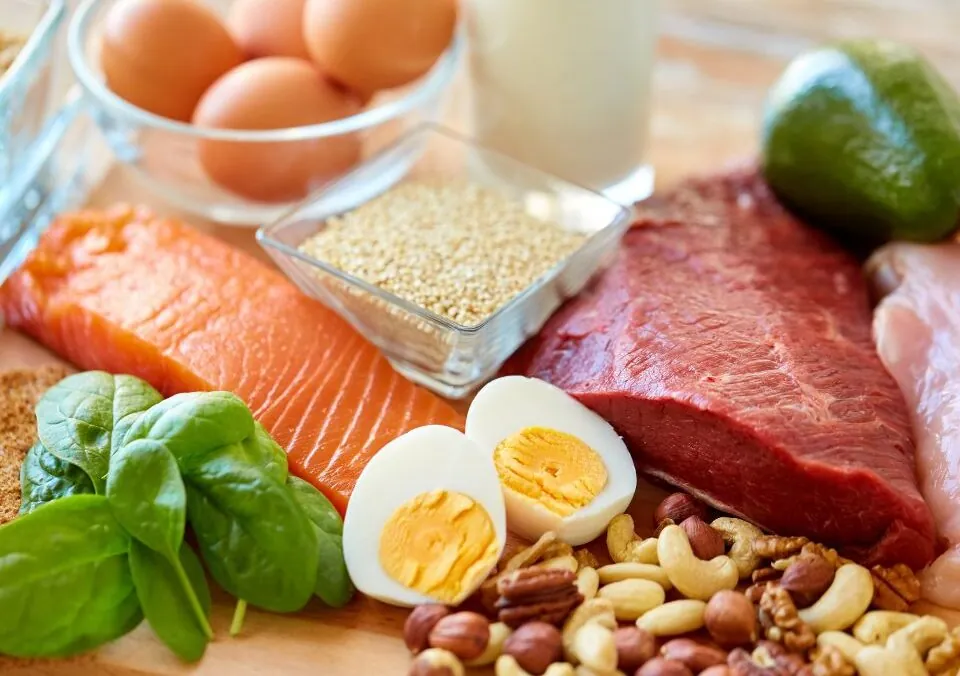
Have you ever finished a meal only to find yourself feeling hungry again not long after? You’re not alone. Many people experience this phenomenon, often wondering how it’s possible to feel hungry when they’ve consumed a substantial amount of food. The likely culprit is a lack of protein in the diet.
Protein is a vital macronutrient, and its importance in our meals cannot be overstated. Not only does it play a fundamental role in various bodily functions, but it is also pivotal for promoting feelings of fullness. This article will delve deeper into the significance of protein in our diets, its physiological effects, sources, and practical tips to ensure you’re getting enough protein in every meal.
The Importance of Protein
1. The Basics of Protein
Protein is made up of amino acids, which are the building blocks of every cell in the body. Our bodies require 20 different amino acids to function optimally, and while some can be produced by our bodies, others must be obtained through our diet. According to this study, protein is essential for the repair and synthesis of tissue, the production of enzymes, hormones, and other body chemicals, and it plays a substantial role in the development and growth of bodily tissues.
2. Protein and Satiety
One of the primary reasons why including protein in every meal is essential is its impact on satiety, or the feeling of fullness. When we consume protein, it stimulates the release of hormones that promote fullness, helping to control our appetite and prevent overeating. The Cleveland Clinic emphasizes that protein reduces the hunger hormone ghrelin and increases levels of peptide YY, helping to keep hunger at bay.
When meals are rich in protein, not only are you less likely to feel hungry shortly after eating, but studies suggest that high-protein diets can also promote weight loss, support muscle mass retention, and enhance metabolic rate. To understand this in context, the National Institutes of Health notes that higher protein intake can lead to better appetite regulation.
The Consequences of Insufficient Protein
When you don’t consume enough protein, you might find yourself stuck in a frustrating cycle of eating where no matter how much you consume, you don’t feel satisfied. This can lead to turning toward quick snacks, which often tend to be higher in carbohydrates and lower in protein. This further exacerbates feelings of hunger and can lead to weight gain or poor dietary choices.
According to nutritionists, the body relies on protein to handle critical tasks. If dietary protein is insufficient, it might not function optimally. That includes supporting muscle repair, managing hormone levels, and facilitating immune function, among others. As a result, it’s crucial to incorporate protein into your daily meals and snacks to prevent deficiencies that can lead to a host of health issues.
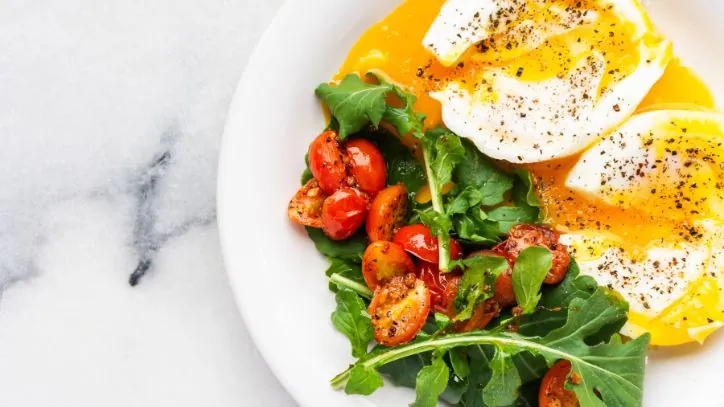
How Much Protein Do You Need?
The amount of protein each person requires may vary based on factors such as age, activity level, and individual health goals. However, Harvard Health suggests that adults should aim for around 46 grams of protein per day for women and 56 grams for men.
For those looking to build muscle or lose weight, protein needs may be higher. Many trainers and nutritionists will often recommend consuming closer to 1.6–2.2 grams of protein per kilogram of body weight, especially for individuals engaged in regular exercise or strength training.
Strategies to Include Protein in Every Meal
Incorporating protein into each meal doesn’t need to be complicated. Here are some effective strategies:
- Start with Breakfast: Instead of sugary cereals, consider starting your day with protein-rich options like Greek yogurt, cottage cheese, or eggs. For example, an omelet packed with vegetables and cheese can provide a solid protein foundation for the day.
- Snack Wisely: Instead of reaching for chips or candy, opt for protein-dense snacks. Choices like a handful of nuts, a hard-boiled egg, or Greek yogurt with berries can curb cravings while providing valuable nutrients.
- Plan Your Meals: When making your grocery list, include high-protein options. Include lean meats, poultry, fish, legumes, and eggs. By planning meals that include protein, you can ensure you hit your targets.
- Experiment with Plant-Based Proteins: If you prefer a vegetarian or vegan diet, consider sources like lentils, chickpeas, tofu, or seitan. These are excellent sources of protein that can be included in a variety of dishes. You could explore more about plant-based proteins here.
- Incorporate Protein Powder: If you struggle to meet your protein goals through food alone, consider adding a protein powder to smoothies, oatmeal, or baked goods. Just be sure to choose a high-quality product that aligns with your dietary needs.
High-Quality Protein Sources
There is a vast array of protein sources available, many of which are produced locally. Here are some notable options:
- Animal Proteins: Beef, pork, poultry, and seafood offer high-quality protein and are often rich sources of essential amino acids. Lean cuts of meat can provide around 20-30 grams of protein per serving.
- Dairy Products: Milk, yogurt, and cheese are rich in protein and also offer calcium and other essential nutrients. Greek yogurt, especially, has a higher protein content than regular yogurt and can be a delightful addition to breakfast or snacks.
- Eggs: Eggs are not only an excellent source of high-quality protein but also versatile in cooking. One large egg contains about 6 grams of protein, making it easy to integrate into various meals.
- Nuts and Seeds: Although slightly lower in protein than animal sources, nuts and seeds are nutrient-dense and provide healthy fats. Almonds, peanuts, and chia seeds are particularly high in protein and can be used in multiple dishes.
- Legumes: Beans, lentils, and peas are fantastic plant-based protein sources. They contain fiber and are more nutrient-dense than many processed snacks. For instance, one cup of cooked lentils can provide about 18 grams of protein.
Delicious High-Protein Recipes
In order to inspire your culinary creativity, here are a few high-protein recipes you can try:
- Protein-Packed Breakfast Burrito:
- Ingredients: 2 scrambled eggs, black beans, shredded cheese, avocado, salsa, and a whole-grain tortilla.
- Instructions: Scramble the eggs, warm the beans, and layer all ingredients into the tortilla for a seasoned finish.
- Quinoa and Chickpea Salad:
- Ingredients: Cooked quinoa, canned chickpeas, diced cucumber, tomato, parsley, and a lemon dressing.
- Instructions: Mix all ingredients in a bowl, drizzle with dressing, and enjoy a refreshing, protein-rich salad.
- Grilled Chicken and Vegetable Skewers:
- Ingredients: Chicken breast, bell peppers, onions, and zucchini.
- Instructions: Skewer ingredients and grill until the chicken is cooked through. Serve with a yogurt-based dipping sauce for added protein.
- Chocolate Protein Smoothie:
- Ingredients: Unsweetened almond milk, a banana, a scoop of chocolate protein powder, and a tablespoon of peanut butter.
- Instructions: Blend until smooth and creamy for a delicious start to the day or a post-workout snack.
Where to Find Quality Protein Sources
If you’re wondering where to obtain high-quality protein sources, look no further than local farmers’ markets or grocery stores that prioritize sustainability and quality. Many farms in Arizona and surrounding areas offer fresh, locally sourced options. Seek out grass-fed beef, free-range eggs, and wild-caught seafood wherever possible to ensure you’re getting the best nutrition.
Online resources such as our Farmer’s Market locator tool can help you find local farmers or farms that offer an array of fresh protein sources in your area. Moreover, grocery stores have begun to feature sections dedicated to local products which can offer not just protein but also enhance your support for sustainable agriculture.
Final Thoughts
In conclusion, making protein a cornerstone of every meal is not just about satiation; it’s about ensuring your body operates at its best. By understanding the importance of protein, recognizing its role in hunger regulation, and exploring the multitude of sources available, you can improve your overall health and well-being.
Incorporate these strategies and recipes into your meal planning, making them a habit until having protein at every meal becomes second nature. For more high-protein recipes and tips to fill your plate with healthy choices, consider visiting Fill Your Plate, where you can explore a range of options tailored to your preferences. Remember, a balanced diet leads to a healthier, happier you!
By Heide Kennedy, Arizona Farm Bureau Communications Intern

